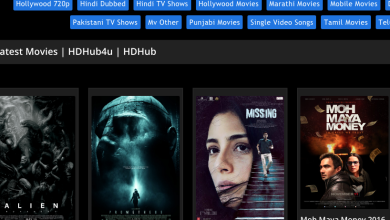
Competition is fierce for acquiring the best talents and recruiting the right candidates in the hiring industry. Moreover, the pandemic has also brought significant changes in the hiring and talent acquisition process. Too many employees left their jobs during the great reshuffle in search of a more flexible workplace. It created a talent void and brought new challenges to recruiting professionals. Now, candidates are prioritizing flexibility and well-being over higher compensation and benefits. Furthermore, candidates are dispersed in various locations across the globe. So, recruitment teams must hire these candidates remotely. Therefore, different technologies are being integrated into hiring solutions, and software applications are becoming better to accommodate these changing needs. The applicant tracking system helps you a lot in the hiring process.
Recruiters now can exploit a worldwide talent pool for filling a position. Also, hiring drives and high-volume recruiting make them go through a large number of candidates’ resumes. Hiring teams must carefully look into each resume to search for candidates with suitable skills, expertise, and experience for the role. Therefore, these recruiters must spend a lot of time screening candidate resumes. Also, they need to contact and communicate with multiple candidates and arrange interviews.
Therefore, organizations are including software for applicant tracking and recruitment in their hiring practices. Often HR CRMs, employee lifecycle management, or workforce management solutions include modules for candidate hiring and applicant tracking. These software applications optimize the applicant tracking and hiring process.
What is Applicant Tracking System?
An applicant tracking system speeds up the hiring process for a position. Software for applicant tracking and hiring can screen candidate resumes and assess job applications faster and accurately. Furthermore, ATSes rank these applicants based on their experience and skills for the users.
ATS software streamlines hiring processes for businesses. It is especially useful for organizations with several openings and a high volume of applicants. Starting from posting jobs to ranking applications and setting up interviews, applicant tracking systems can be used in every stage of the recruitment process. What is more, it can reduce the hiring time and cost significantly.
When someone submits a job application online, there is a good possibility, it will run through an ATS before reaching the hiring manager. Software for applicant tracking is used by over 90% of businesses to automate recruiting.
The best applicant tracking systems save organizations money and time by presenting only the top prospects to HR managers. Also, candidates must overcome an ATS screening before they can be actually considered by the company.
Why Do Companies Use Applicant Tracking Systems?
Businesses use software for applicant tracking and recruitment of candidates for a variety of purposes:
- Automate and customize the recruiting process
- Remove unnecessary and redundant applications
- Rank and group candidates in a searchable database
- Reduce hiring costs and time.
Automate and customize the recruiting process
Businesses have their own unique hiring process, and custom flows for different openings. For instance, the recruiting procedures for a marketing manager and a computer programmer will be different.
With the use of ATS software, HR staff can design tailored hiring workflows for various job opportunities. An ATS allows tracking applicants automatically as they advance through the hiring process. For example, after ranking a software engineer’s résumé, the HR manager can automatically send an email to schedule an interview through the software for applicant tracking and hiring.
Remove unnecessary and redundant applications
Many job seekers send multiple applications for the same position hoping for a favorable reply. This number game increases the volume of applications and resumes. Also, this raises the number of duplicate applications.
As a result, hiring managers have to deal with a large volume of spam that consists of irrelevant and redundant applications. Algorithms used by applicant tracking systems can identify these duplicate applications and also, can filter them from other applicants. Additionally, the software ranks these applicants lower than other candidates for better screening. process.
Rank and group candidates in a searchable database
When a candidate applies online, the applicant tracking system (ATS) immediately creates a candidate profile. It parses the application’s data and adds it to the profile of the applicant. All this information is stored with attributes so that database can be searched by any user for finding resumes with relevant keywords and highly ranked candidates.
Save money and time
Hiring managers can avoid spending additional time sorting and categorizing resumes using software for the applicant tracking process. Businesses can also focus their resources on hiring the best individuals by decreasing the time spent on application screening.
How do applicant tracking systems work?
An applicant tracking system’s primary function is to automatically read resumes and score applicants. When a potential candidate uploads a resume using an applicant tracking system (ATS), the resume and entered information are evaluated by the tool.
The system parses and transcribes the resumes to plain texts. Next, it assesses the application based on the criteria or the filters set in the application. The ATS then assigns a score for each candidate. Lastly, the system adds all candidate data and scores to a digital profile in the software. Applicant tracking tools store candidate profiles in a searchable database.
ATS software often searches for terms that indicate a person may be qualified for a job role. For instance, if an employer is looking for a marketing manager, the relevant keywords will be digital marketing, SEO, social media, etc. Because employers are usually interested in these keywords when hiring for this kind of position. ATS will score higher on the resumes or profiles that contain these relevant keywords and rank them above others.
Recruiters or hiring managers can also search the database with these related keywords to find eligible candidates. So, when hiring professional searches for the term “SEO”, the software, the tool will bring up all the candidate profiles that contain the phrase.
Other conditions for applicant scores are determined by employers. An employer may, for instance, use a yes-or-no question to weed out inexperienced candidates. An ATS can ask questions, like “Do you have up to three years of experience?”, or “Are you legally able to work in the United States?”. The system automatically excludes candidate from the recruitment process and receives a rejection email when they respond “No” to such questions.
ATS systems can analyze and evaluate a person’s listed skills or past work experience. Applicant tracking system use technologies, like artificial intelligence and natural language processing to increase their accuracy.
The advantages and disadvantages of Using an Applicant Tracking System
Let us examine the advantages and disadvantages of choosing an ATS system for recruiting candidates.
Advantages
- Streamlines the hiring process
- Ranks candidates by comparing their resumes to the job description
- Reduces the cost and time per hire and enhances recruiter productivity
- Removes redundant applications and builds candidate profiles
- Enables resume searching
- Aids in arranging interviews and candidate communications
- Automates job posting and recruiting marketing
Disadvantages
- Low accuracy and may filter out qualified candidates
- May fail to parse resumes with complex designs
Wrap up
Software for applicant tracking and managing the recruitment process is becoming essential. Also, technologies are progressing fast, and ATSes are also, becoming more sophisticated and accurate. So, maximize efficiency and transform your hiring process by implanting an ATS.




